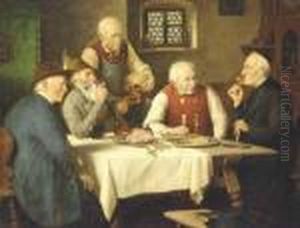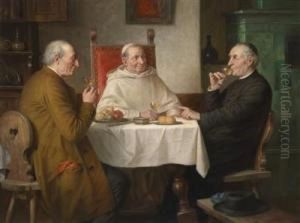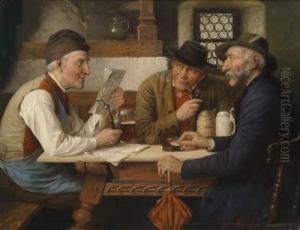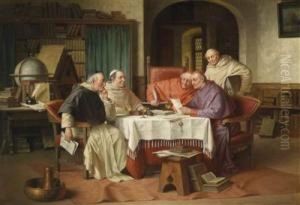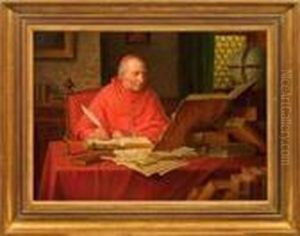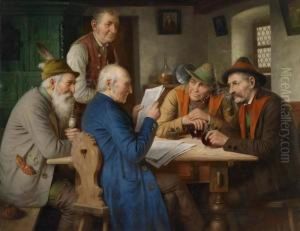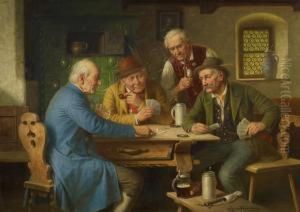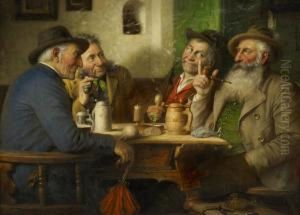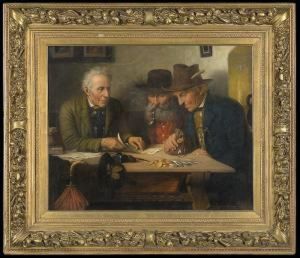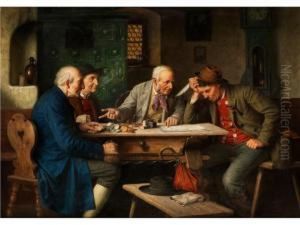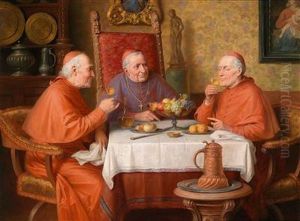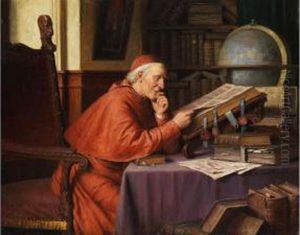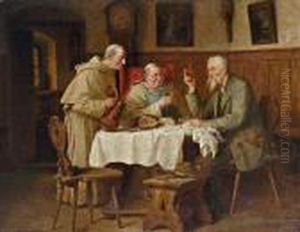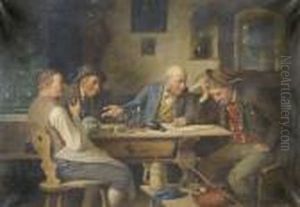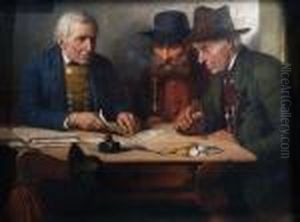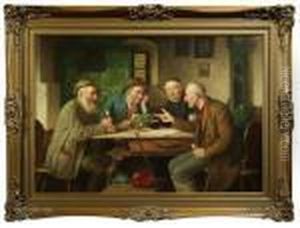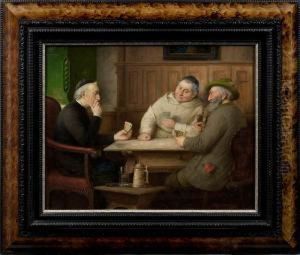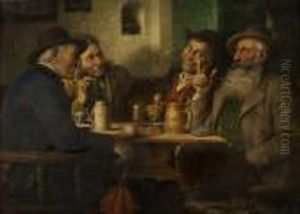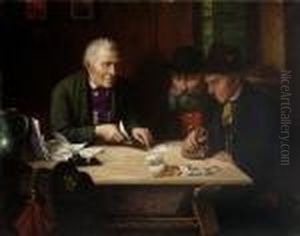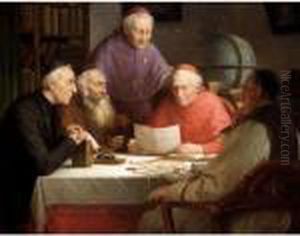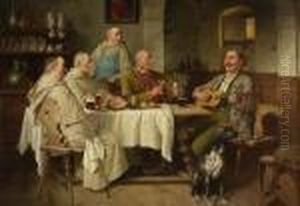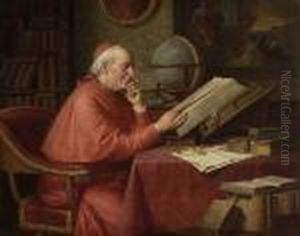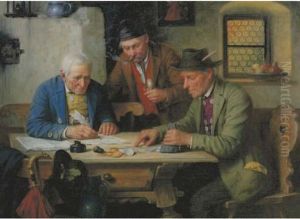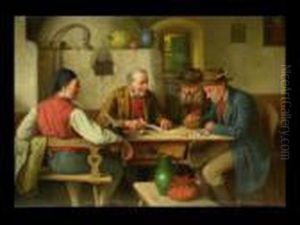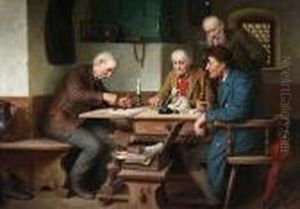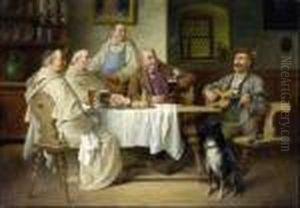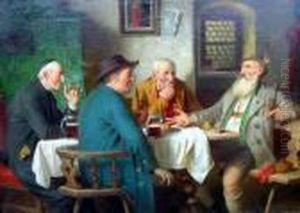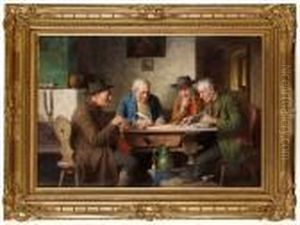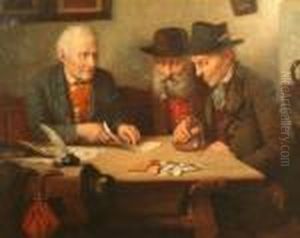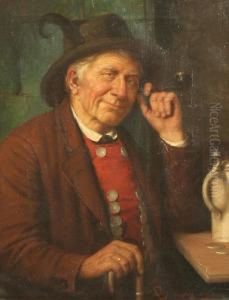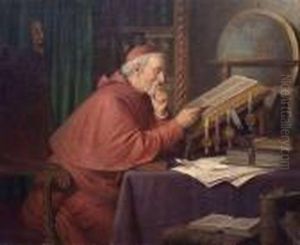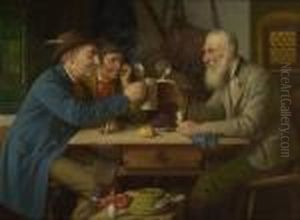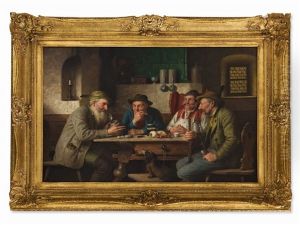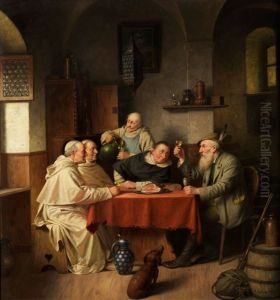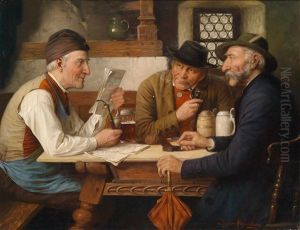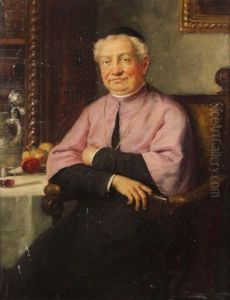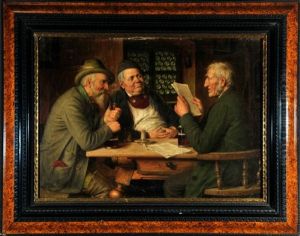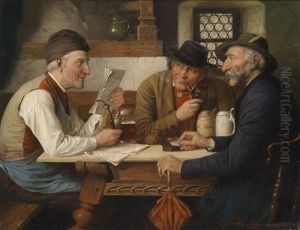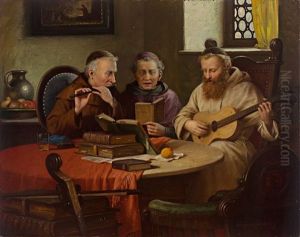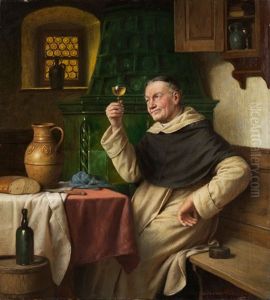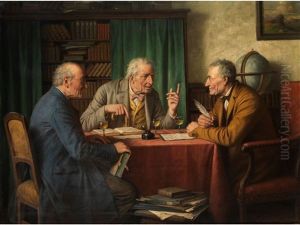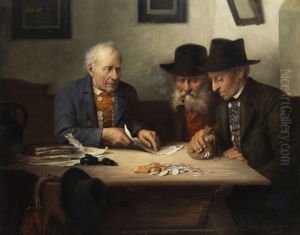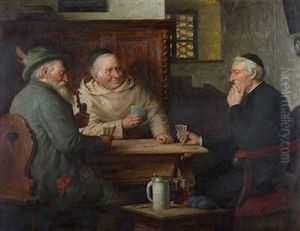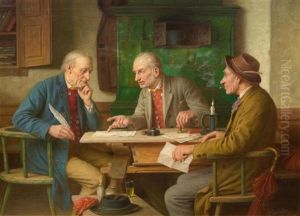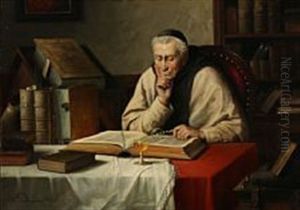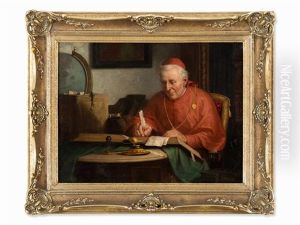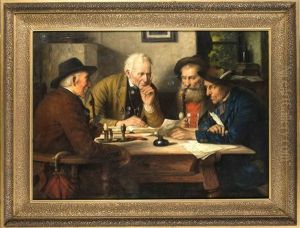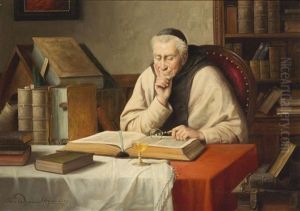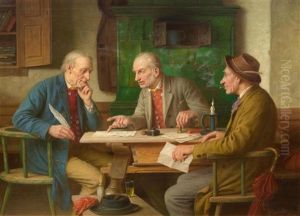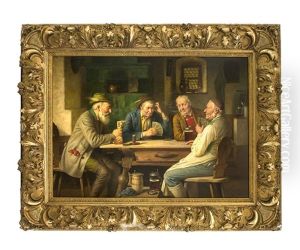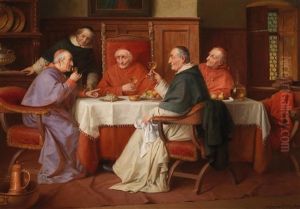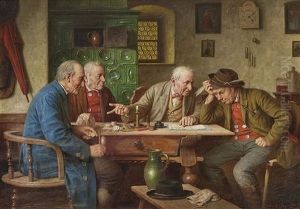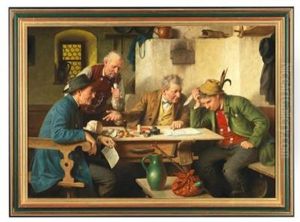Josef Wagner-Hohenberg Paintings
Josef Wagner-Hohenberg was an Austrian artist, known for his contributions to the Art Nouveau movement and his association with the Vienna Secession. Born in 1870, he was a part of a vibrant period in Austrian art that sought to break away from traditional academic styles and embrace more modern, stylistic approaches.
Wagner-Hohenberg received his artistic training at the Academy of Fine Arts Vienna, where he was exposed to the latest trends in European art. His early work was influenced by the prevailing historicist style, but he soon began to develop a more personal style characterized by fluid lines, natural forms, and a subtle use of color, which would become hallmarks of his later work.
In the late 1890s, Wagner-Hohenberg became associated with the Vienna Secession, a group of artists who rebelled against the conservatism of the Vienna Künstlerhaus. The Secessionists, including Gustav Klimt, Koloman Moser, and Josef Hoffmann, aimed to create art that was free from historical constraints and that reflected modern sensibilities. Wagner-Hohenberg's work from this period demonstrates the influence of the Secessionist ideals, as he embraced a more decorative and symbolic language in his art.
Throughout his career, Wagner-Hohenberg worked in a variety of media, including painting, graphic design, and illustration. He was also involved in designing interiors and objects, contributing to the Gesamtkunstwerk (total work of art) ideal that many Vienna Secession artists aspired to achieve. His designs often featured botanical motifs and were marked by an elegance and clarity that reflected the new artistic tastes of the early 20th century.
Despite his association with the Vienna Secession, Wagner-Hohenberg did not achieve the same level of fame as some of his contemporaries. However, he continued to work and exhibit his art throughout his life. He died in 1939, leaving behind a body of work that, while less well-known, is representative of the dynamic changes in art and design that took place in Vienna at the turn of the century.
